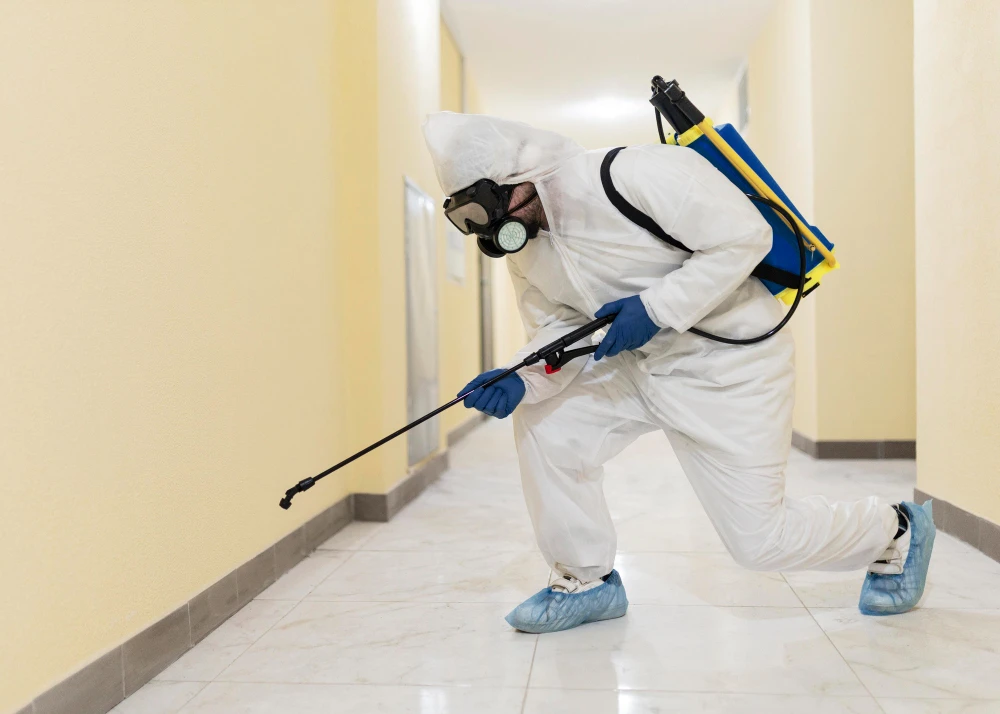Ensuring rigorous infection control in care homes is a non-negotiable responsibility—especially here in Wiltshire, where residents and staff alike rely on a safe, hygienic environment. From the historical corridors of Salisbury to modern facilities in Swindon, every care setting faces the dual challenges of high footfall and vulnerable occupants. In this detailed guide, we share five proven cleaning strategies—backed by best practices and local insights—to help Wiltshire care homes minimise cross-contamination, protect residents’ health, and maintain an impeccable standard of care.
Why Infection-Control Cleaning Matters in Wiltshire Care Homes
Wiltshire care homes host a diverse population, from post-operative patients recovering at home-from-home facilities in Chippenham to long-term residents living in sheltered communities around Trowbridge. With communal dining areas, shared bathrooms, and regular visits from family and medical staff, the risk of pathogen transmission is ever-present. Effective infection-control cleaning:
- Reduces outbreaks of common respiratory and gastrointestinal infections.
- Protects immunocompromised and elderly residents.
- Meets stringent CQC (Care Quality Commission) and NHS guidelines.
- Reassures families and regulatory bodies that your care home prioritises safety.
In the sections that follow, we’ll explore how to build a robust cleaning programme tailored to Wiltshire’s unique care-home landscape.
1. Establish a Risk-Based Cleaning Schedule
A one-size-fits-all timetable won’t deliver the protection care homes need. Instead, craft a schedule based on risk level:
- High-Risk Zones such as sluice rooms, en-suite bathrooms, and medication preparation areas demand disinfection at least twice daily—or immediately after each use.
Example: At a Salisbury care home, staff disinfect trolley handles and medicine trolleys after every round. - Medium-Risk Zones like dining rooms, lounges and communal activity spaces should be sanitised after every meal service and spot-checked between sessions.
Local Insight: In Swindon-area homes, extra attention to high-chair trays and bingo tables during busy afternoons cuts infection spikes in half. - Low-Risk Zones such as administrative offices and storage areas benefit from weekly deep cleans, with interim surface wipes as needed.
Tip: Colour-coded cleaning cloths help teams distinguish tasks and zones instantly.
By aligning frequency with risk, your Wiltshire care home maximises resources—focusing efforts where they matter most.
2. Use NHS-Approved Disinfectants and Respect Dwell Times
Not all cleaning agents are equal. Wiltshire care homes must adhere to the UK Health Security Agency’s approved disinfectant list and follow strict application protocols:
- Select Approved Products: Use only those listed on the NHS Supply Chain portal. These formulas are proven to eliminate bacteria, viruses and spores.
- Prepare Fresh Solutions Daily: Many disinfectants degrade over time. Mixing fresh batches each morning ensures maximum potency.
- Observe Dwell Times: Surfaces must remain visibly wet for the recommended duration—typically 1 to 5 minutes.
Pro Tip: Attach timers to spray bottles or use colour-changing cloths that indicate when dwell time is complete.
Skipping dwell times is a common pitfall. In a Trowbridge care home pilot programme, installing countdown timers reduced premature wiping incidents by 75%, leading to a drop in surface contamination rates.
3. Prioritise High-Touch Surfaces and Shared Equipment
Door handles and communal devices can harbour the highest microbial loads. A focused approach yields significant benefits:
- Map Your Hotspots: Identify entry/exit doors, lift buttons, grab rails, nurse-call switches, and shared phones or tablets.
- Implement “Clean-as-You-Go”: Empower staff and residents to disinfect high-touch items before and after each use. Provide easily accessible wipe stations at key points.
- Rotate Equipment: Alternate between reusable microfibre cloths for routine cleaning and single-use wipes for critical zones, minimising cross-contamination.
A Chippenham care home saw a 40% reduction in common cold cases after introducing “clean-as-you-go” dispensers by the dining room entrance and activity tables.
4. Train, Audit and Empower Your Cleaning Team
Even the best protocols collapse without well-trained staff. Invest in continuous education, clear accountability, and performance tracking:
- Comprehensive Onboarding: Cover infection-control theory, PPE usage (gloves, aprons, masks), and sequence of cleaning (clean-to-dirty).
- Quarterly Refresher Workshops: Update teams on new hygiene standards, product changes, and review incident reports.
Local Partnership: Collaborate with Wiltshire NHS infection-control nurses for guest-led training sessions. - Monthly Audits & Surprise Inspections: Supervisors perform unannounced checks, scoring each area against defined criteria. Share results in briefings and recognise top performers.
Empowered cleaners take pride in their work. In one Marlborough facility, introducing peer mentoring and public “Clean Star” awards boosted audit scores by 20% within two months.
5. Document, Review and Continuously Improve
A data-driven feedback loop keeps your infection-control programme agile and effective:
- Detailed Checklists & Logs: Use paper or digital forms to record every cleaning task, complete with timestamps and staff initials.
- Key Performance Indicators (KPIs): Track metrics such as “dwell-time compliance,” “high-touch sanitation rate,” and “incident-related infection reductions.”
- Weekly Review Meetings: Bring together cleaning staff, nursing teams and management to discuss audit findings, outbreak data and best-practice adjustments.
- Share Success Stories: Highlight local wins—like a Devizes care home that achieved zero norovirus cases over a flu season—to motivate the entire team.
Continuous improvement ensures your Wiltshire care home remains ahead of emerging threats and evolving standards.
Common Challenges & Solutions
Challenge: Staff resistance to new protocols.
Solution: Involve teams in protocol development, gather feedback and offer incentives for compliance.
Challenge: Supply chain delays for approved products.
Solution: Maintain a two-week stock buffer and identify secondary approved disinfectants in advance.
Challenge: Inconsistent documentation.
Solution: Transition to user-friendly digital checklists accessible on tablets or mobile devices.
FAQs
Q: How often should care home bedroom en-suite areas be disinfected?
A: At minimum twice daily—and immediately after any incident (e.g., spill of bodily fluids).
Q: Can residents assist with infection-control cleaning?
A: Yes—residents can be empowered to wipe down personal items and table surfaces, under supervision.
Q: What should I do during an outbreak?
A: Increase high-risk zone frequency to every two hours, restrict communal activities, and follow NHS outbreak protocols.
Conclusion
Infection-control cleaning is the bedrock of resident safety in Wiltshire care homes. By implementing a risk-based schedule, using approved disinfectants correctly, focusing on high-touch surfaces, investing in staff training, and embracing continuous improvement, you’ll build a robust defence against healthcare-associated infections.
Ready to elevate your infection-control standards? Contact Care For Wiltshire today for a tailored consultation and discover how our expert cleaning teams can safeguard your care home’s health and reputation.


